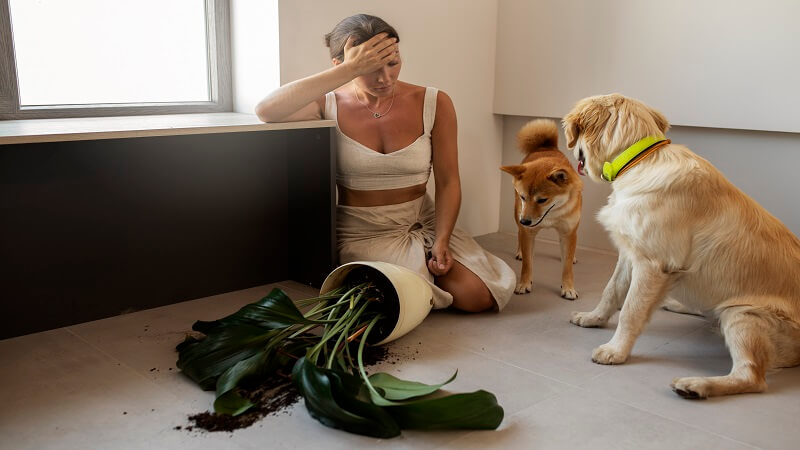Your home is meant to be a safe haven, but for pets, everyday household items can pose unexpected dangers. From common foods to hidden toxins, many things we overlook can be harmful to our furry friends. While most pet owners do their best to create a secure environment, accidents can happen in an instant. Knowing what to watch out for can help prevent emergency situations and keep your pet healthy.
If your pet ingests something toxic or has a sudden health crisis, acting quickly is crucial. Contacting an emergency vet Rosebery or a trusted veterinarian at the first sign of distress can make all the difference. To help you stay ahead of potential dangers, here are some of the most common hidden hazards in homes that could harm your pet.
1. Toxic Foods
Many foods that are safe for humans can be extremely toxic to pets. Even small amounts of certain foods can cause serious health issues, including vomiting, seizures, or organ failure.
Common Toxic Foods for Pets:
- Chocolate – Contains theobromine, which is toxic to dogs and cats.
- Grapes and raisins – Can cause sudden kidney failure in dogs.
- Onions and garlic – Damage red blood cells and can lead to anemia.
- Xylitol (found in sugar-free gum and candy) – Causes insulin spikes and liver damage in dogs.
- Alcohol and caffeine – Both can be fatal in small doses.
How to Keep Your Pet Safe:
- Store food out of reach, even if your pet isn’t typically interested.
- Never leave food unattended on countertops.
- Be cautious about table scraps and remind guests not to feed your pet.
2. Household Cleaning Products
Many common household cleaners contain chemicals that can be harmful to pets if inhaled, licked, or touched. Bleach, ammonia, and even some natural essential oils can cause respiratory problems, skin irritation, or poisoning.
How to Keep Your Pet Safe:
- Store cleaning products in locked cabinets or high shelves.
- Use pet-safe cleaning alternatives whenever possible.
- Keep pets out of the room while cleaning and allow proper ventilation.
3. Electrical Cords and Small Objects
Pets, especially puppies and kittens, love to chew. Electrical cords can cause electrocution if bitten, while small household items pose choking hazards.
How to Keep Your Pet Safe:
- Use cord covers or keep wires out of reach.
- Pick up small objects like rubber bands, batteries, and buttons.
- Provide safe chew toys to redirect their focus.
4. Poisonous Plants
Many common houseplants and flowers are toxic to pets, causing symptoms ranging from mild stomach upset to severe poisoning.
Plants That Are Toxic to Pets:
- Lilies – Extremely toxic to cats, causing kidney failure.
- Aloe Vera – Can cause vomiting and diarrhea.
- Pothos and philodendrons – Contain calcium oxalates that can irritate the mouth and throat.
- Sago palm – Highly toxic to dogs, causing liver failure.
How to Keep Your Pet Safe:
- Research pet-safe plants before bringing them home.
- Keep toxic plants out of reach or avoid having them altogether.
5. Medications and Personal Care Products
Over-the-counter and prescription medications can be fatal to pets, even in small doses. Pain relievers, antidepressants, and even vitamins can have serious side effects.
How to Keep Your Pet Safe:
- Store medications in secure cabinets.
- Never leave pills on countertops or in easily accessible places.
- Be mindful of where you apply topical medications or lotions, as pets may lick them off your skin.
6. Open Windows and Balconies
Many pet owners assume their animals won’t jump out of an open window or off a balcony, but accidents happen frequently. Cats are especially prone to “high-rise syndrome,” where they fall from heights while trying to chase birds or insects.
How to Keep Your Pet Safe:
- Install secure screens on windows.
- Never leave pets unattended on balconies.
- Provide safe outdoor alternatives, like enclosed patios or pet-friendly harnesses.
7. Trash and Recycling Bins
Garbage cans are full of potential dangers, including food scraps, sharp objects, and toxic substances. Dogs, in particular, are notorious for digging through trash if given the chance.
How to Keep Your Pet Safe:
- Use trash cans with secure lids.
- Keep garbage and recycling bins in cabinets or behind closed doors.
- Take out the trash regularly to remove tempting smells.
Keeping Your Pet Safe Every Day
Your home should be a place where your pet can roam freely without risk. By taking small but important precautions, you can reduce the chances of an emergency and keep your furry friend safe. Regularly check your home for potential hazards and make adjustments as needed. A little prevention now can save you from heartache—and an expensive trip to the vet—later.
